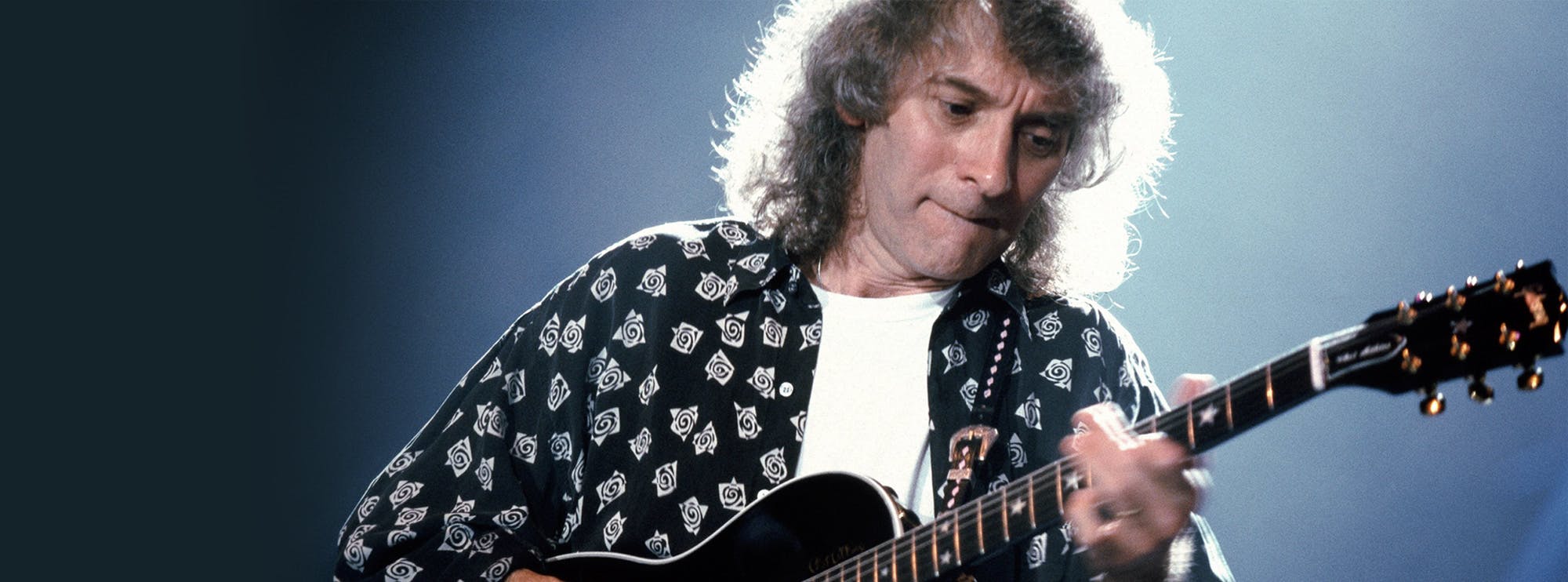Walk Away by Joe Walsh
Joe Walsh's "Walk Away" is a classic rock anthem from his time with the James Gang, packed with driving riffs, bluesy bends, and soulful lead guitar work. Our Licklibrary.com note-for-note guitar lesson for "Walk Away" dives deep into the techniques that define Walsh's signature style, breaking down each part of the song in meticulous detail. This lesson will help you not only learn how to play this iconic track but also gain a deeper understanding of the guitar techniques used by one of rock's most influential players. Danny Gill breaks down this classic rock song in this exclusive Lick Library video tutorial.
About Joe Walsh and "Walk Away"
Joe Walsh is renowned for his unique blend of technical proficiency and emotional expression on the guitar. As a member of the James Gang, he helped define the sound of 70s rock with songs like "Walk Away," characterised by his gritty yet melodic approach. Walsh later went on to join the Eagles, where his contributions solidified his status as a guitar legend.
In "Walk Away," Walsh’s guitar work seamlessly blends rock and blues influences, creating a powerful and memorable guitar performance. His ability to combine rhythm and lead guitar in innovative ways showcases his mastery of a range of guitar techniques. Whether it's his use of string bending or his deft application of vibrato, Walsh's style in this track provides a wealth of learning opportunities for guitarists of all levels.
Breakdown of Guitar Techniques in "Walk Away"
String Bending
In "Walk Away," one of the most noticeable features is Walsh’s use of string bending, especially during the lead sections. String bending involves pushing or pulling a string to change its pitch, creating a vocal-like quality that adds emotion to the solo.
Benefit: Mastering string bending helps guitarists develop better control over pitch and expression, adding dynamic character to solos.
Vibrato
Walsh’s vibrato technique shines in "Walk Away," especially during the held notes in the lead sections. Vibrato involves oscillating the pitch of a note by rapidly bending the string. In this song, vibrato adds a smooth, singing quality to Walsh's playing.
Benefit: Vibrato gives notes more life and sustain, and learning it is essential for adding personal expression to any piece.
Power Chords
The song's foundation is built on solid power chords that drive the rhythm guitar. Power chords, typically made up of the root and fifth note of a chord, provide a punchy, straightforward sound that’s a staple of rock music.
Benefit: Power chords are fundamental in rock guitar, offering a powerful sound while being easy to play. Learning power chords helps guitarists quickly build strong rhythm sections.
Slides
Slides are another integral part of Walsh's playing in "Walk Away." Sliding from one note to another gives his phrasing a fluid, connected feel that makes his playing stand out.
Benefit: Mastering slides can help guitarists transition between notes smoothly, improving the flow of solos and riffs.
Double-Stop Bends
In some sections, Walsh uses double-stop bends, where two notes are bent simultaneously. This creates a rich, harmonised sound and adds a lot of character to the solo parts in "Walk Away."
Benefit: Double-stop bends enhance a player's ability to add harmony to their solos, making their playing sound fuller and more dynamic.
Hammer-Ons and Pull-Offs
Throughout "Walk Away," hammer-ons and pull-offs are used to create fast, fluid note transitions. These legato techniques allow Walsh to play smooth, flowing lines without picking every note.
Benefit: Learning hammer-ons and pull-offs improves speed and efficiency in both lead and rhythm playing, making your phrasing sound more fluid and connected.
Slides and Rakes
Walsh employs slides and rakes to create unique textures in his rhythm and lead parts. A rake involves muting the strings and striking them in a sweeping motion before landing on a note, adding a percussive quality to the playing.
Benefit: Rakes are great for adding a rhythmic dynamic to solos, while slides help with smooth transitions between notes, enhancing overall expression.
Barre Chords
Barre chords are used in the rhythm guitar sections, providing a fuller sound compared to open chords. Walsh's rhythmic use of these chords adds punch to the song’s structure.
Benefit: Barre chords are a versatile tool for guitarists, giving them the ability to play a variety of chord shapes all over the neck, which is crucial for more advanced playing.
The Importance of Learning Joe Walsh's Techniques
Learning to play "Walk Away" note-for-note not only helps you master a classic rock song but also deepens your understanding of essential guitar techniques. Joe Walsh’s playing in this song is a masterclass in combining rhythm and lead guitar seamlessly, and by focusing on techniques like vibrato, string bending, and power chords, you'll build skills that are crucial for any rock guitarist.
Moreover, these techniques are not just useful for playing "Walk Away" but can be applied to countless other songs and styles, making this lesson a valuable tool for any guitarist looking to broaden their repertoire.
Guitar Techniques Used in This Lesson
Here is a list of techniques used in the "Walk Away" guitar lesson, with links to more detailed explanations of each technique:
By mastering these techniques, you’ll be well on your way to capturing the essence of Joe Walsh’s distinctive style while improving your overall guitar playing abilities. Dive into this lesson and unlock the full potential of this iconic track!

About The Tutor
Tutor Profile
Danny Gill
Danny Gill is, without a doubt, the most loved tutor by our community. With an incredible array of DVDs and web lessons for LickLibrary covering a wide variety of topics all of which he covers with incredible detail, it's no wonder he carries as much respect as he does. As...



